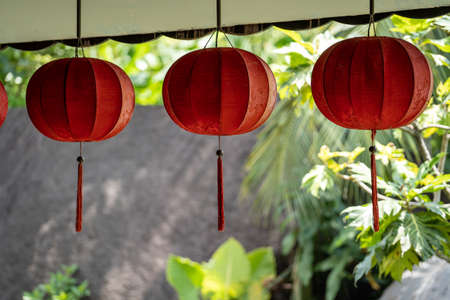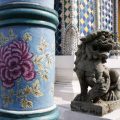Introduction to Lucky Colors in the Chinese Zodiac
When it comes to Chinese culture, lucky colors are much more than just favorite shades or fashion choices. In fact, for millions of people around the world, especially those who follow traditions connected to the Chinese Zodiac, lucky colors hold deep meaning and are believed to influence everything from personal well-being to success at work. For American readers who may be new to this idea, understanding the basics of lucky colors within the context of the Chinese Zodiac can offer an exciting glimpse into a centuries-old tradition that continues to shape modern life in East Asian communities—and beyond.
What Are Lucky Colors?
Lucky colors are specific hues that are thought to bring good fortune, happiness, and protection against bad luck. These beliefs stem from ancient Chinese philosophy, which often links color with the natural world and elements like wood, fire, earth, metal, and water. Over time, people noticed patterns in how certain colors seemed to impact their luck and started associating particular shades with each year’s zodiac animal.
The Chinese Zodiac and Its Animals
The Chinese Zodiac is a 12-year cycle where each year is represented by an animal: Rat, Ox, Tiger, Rabbit, Dragon, Snake, Horse, Goat (sometimes called Sheep), Monkey, Rooster, Dog, and Pig. Each animal has its own personality traits and is associated with specific lucky colors that are believed to enhance positive qualities or help avoid misfortune. Here’s a quick look at the animals and their most common lucky colors:
| Zodiac Animal | Main Lucky Colors |
|---|---|
| Rat | Blue, Gold, Green |
| Ox | White, Yellow, Green |
| Tiger | Blue, Gray, Orange |
| Rabbit | Purple, Pink, Red |
| Dragon | Gold, Silver, White |
| Snake | Black, Red, Yellow |
| Horse | Brown, Yellow, Purple |
| Goat (Sheep) | Green, Red, Purple |
| Monkey | White, Gold, Blue |
| Rooster | Gold, Brown, Yellow |
| Dog | Red, Green, Purple |
| Pig | Yellow, Gray, Brown |
A Cultural Bridge: Understanding Lucky Colors in Everyday Life
For many Americans interested in learning about different cultures or exploring international traditions at home or at work—especially during celebrations like Lunar New Year—knowing about lucky colors adds a meaningful layer to participation. You might notice red decorations everywhere during festivals or friends picking out special outfits in their zodiac’s lucky color before a big event. These choices aren’t just for style; they’re rooted in a desire for positive energy and good luck in daily life. By recognizing these traditions and their significance through history and modern practice alike, we gain a richer appreciation for how color can connect us across cultures.
2. Historical Roots of Zodiac Colors
The connection between colors and the Chinese zodiac has deep historical roots. In ancient China, people believed that certain colors carried unique powers and meanings. These ideas became intertwined with the twelve animal signs of the Chinese zodiac, creating a rich tradition that continues today.
Ancient Beliefs and the Five Elements
The traditional Chinese philosophy of the Five Elements—Wood, Fire, Earth, Metal, and Water—plays a key role in understanding zodiac colors. Each element is linked to specific colors and influences certain zodiac signs. People believed that wearing or displaying your sign’s lucky color could bring good fortune, health, and happiness.
| Zodiac Sign | Associated Element | Traditional Lucky Color(s) |
|---|---|---|
| Rat | Water | Blue, Gold, Green |
| Ox | Earth | White, Yellow, Green |
| Tiger | Wood | Blue, Grey, Orange |
| Rabbit | Wood | Pink, Red, Purple, Blue |
| Dragon | Earth | Gold, Silver, White |
| Snake | Fire | Black, Red, Yellow |
| Horse | Fire | Yellow, Green, Red |
| Goat (Sheep) | Earth | Brown, Red, Purple |
| Monkey | Metal | White, Gold, Blue |
| Rooster | Metal | Gold, Brown, Yellow |
| Dog | Earth | Red, Green, Purple |
| Pig (Boar) | Water | Yellow, Grey, Brown, Gold |
The Symbolism of Colors in Everyday Life
The influence of these beliefs reached beyond astrology. In daily life, people used lucky colors for clothing during festivals or important events such as weddings and New Year celebrations. Families decorated their homes with specific colors to attract positive energy. The tradition of associating colors with the zodiac helped shape many customs still observed in modern times.
Cultural Transmission Through Generations
The practice of matching colors to zodiac signs was passed down from parents to children over centuries. It became an important way for families to celebrate their heritage and express hopes for a better future. Even today in America’s Chinese communities, you might see people choosing gifts or decorations based on these time-honored color associations.
A Bridge Between Past and Present
The historical roots of zodiac colors show how ancient wisdom continues to inspire modern traditions. Understanding where these beliefs come from can help us appreciate their significance in both Chinese culture and multicultural communities across the United States.
![]()
3. Traditional Significance and Symbolism
In Chinese culture, colors are much more than just visual choices; they carry deep meanings and are believed to influence a person’s luck, fortune, and even personality traits. Each animal in the Chinese Zodiac is associated with specific lucky colors that are thought to enhance good energy and ward off bad luck. Understanding these connections helps explain why certain colors are chosen for clothing, decorations, and gifts during important events like Lunar New Year or birthdays.
How Colors Influence Luck and Fortune
Chinese tradition holds that the right color can bring good fortune, success, and positive vibes, while the wrong color might attract misfortune. For example, red is seen as a powerful color that symbolizes happiness, celebration, and protection against evil spirits. On the other hand, black is often avoided in festive settings because it’s linked to mourning.
Color Associations for Each Zodiac Animal
| Zodiac Animal | Main Lucky Colors | Symbolic Meaning |
|---|---|---|
| Rat | Blue, Gold, Green | Intelligence, Prosperity, Growth |
| Ox | White, Yellow, Green | Loyalty, Wealth, Harmony |
| Tiger | Orange, Grey, Blue | Courage, Balance, Wisdom |
| Rabbit | Pink, Red, Purple | Love, Good Luck, Nobility |
| Dragon | Gold, Silver, White | Strength, Success, Purity |
| Snake | Black, Red, Yellow | Mystery, Energy, Optimism |
| Horse | Brown, Yellow, Purple | Stability, Confidence, Prestige |
| Goat (Sheep) | Green, Red, Purple | Harmony, Joy, Spirituality |
| Monkey | White, Blue, Gold | Cleverness, Peacefulness, Riches |
| Rooster | Gold, Brown, Yellow | Diligence, Prosperity, Enthusiasm |
| Dog | Red, Green, Purple | Loyalty, Vitality, Wisdom |
| Pig (Boar) | Yellow, Grey, Brown | Sincerity, Balance, Dependability |
The Role of Personality Traits in Color Selection
The lucky colors aren’t just about external luck; they’re also tied to personality traits. For instance:
- A person born in the Year of the Rabbit might wear pink or purple to encourage kindness and charm.
- A Dragon year individual may choose gold or silver to boost confidence and leadership abilities.
- If you’re a Tiger sign looking for balance in life decisions or career moves, blue or grey could be your go-to shades.
Cultural Practices Today
This traditional symbolism continues to influence daily life in modern times. Many people still consult their zodiac animal’s lucky colors when making big decisions such as what color car to buy or what to wear for an important interview. It’s a blend of ancient wisdom and practical living that adds a unique touch of positivity and hope to everyday choices.
4. Lucky Colors in Daily Life and Festivities
Lucky colors from the Chinese Zodiac are not just ancient traditions—they play an active role in both everyday life and major celebrations for Chinese and Chinese-American communities. These colors are used to express positive wishes, attract good fortune, and show cultural pride. Below are some common ways lucky colors influence daily routines and special events.
Lucky Colors in Clothing Choices
People often select their outfits based on zodiac lucky colors, especially for important days like birthdays, job interviews, or weddings. For example, red is widely worn for its symbolism of luck and happiness. During the Lunar New Year, it is common to see people dressed in red or gold to invite prosperity for the year ahead.
Examples of Zodiac Lucky Colors in Fashion
| Zodiac Animal | Lucky Color(s) | Typical Clothing Item |
|---|---|---|
| Rat | Blue, Gold | Blue jackets, gold jewelry |
| Ox | White, Yellow | White shirts, yellow scarves |
| Tiger | Orange, Gray | Orange sweaters, gray hats |
| Rabbit | Pink, Red | Pink dresses, red shoes |
| Dragon | Gold, Silver | Gold accessories, silver ties |
| Snake | Black, Green | Black coats, green handbags |
Incorporating Lucky Colors into Home Décor
Lucky colors are also seen in home decorations. Families may decorate living rooms with red lanterns or golden ornaments during holidays to bring harmony and good vibes into their homes. In Chinese-American households, blending traditional lucky colors with modern design elements helps keep the tradition alive while fitting American lifestyles.
Home Décor Ideas Using Lucky Colors
- Red paper cuttings on windows during Lunar New Year.
- Gold table runners or cushions for festive meals.
- Purple flowers or vases for Rabbit year blessings.
- Splash of blue in art pieces for a Rat family member.
Lucky Colors in Major Celebrations: Lunar New Year & Beyond
The Lunar New Year is the most celebrated festival where lucky colors take center stage. Streets are filled with red banners and gold decorations; families give out “hongbao” (red envelopes) filled with money to children and friends as a symbol of good luck. In the U.S., Chinese-American communities continue these traditions at home and through public parades or cultural fairs. Other milestones such as weddings or baby showers also feature zodiac-based color themes—red is always prominent at weddings because it represents joy and prosperity.
Lucky Color Traditions at a Glance
| Event/Festival | Main Lucky Colors Used | Cultural Meaning |
|---|---|---|
| Lunar New Year | Red, Gold | Luck, wealth, happiness |
| Weddings | Red, Pink | Love, joy, new beginnings |
| Babay’s First Month (Red Egg & Ginger Party) | Purple, Red | Blessings for health & growth |
| Birthday Celebrations | Zodiac-specific color | Personal luck & success |
Lucky colors continue to be an important way for people to honor their heritage while embracing life’s big and small moments with optimism and positivity.
5. Modern Perspectives and Cross-Cultural Understanding
In today’s world, the idea of lucky colors from the Chinese Zodiac is gaining more attention, not just in China but also in the United States. As Americans become more interested in global traditions and multicultural practices, many are discovering how these color beliefs fit into modern life. People now mix ancient wisdom with personal style and cultural expression.
Growing Awareness in American Culture
With the rise of cultural festivals like Lunar New Year celebrations in cities across the U.S., many Americans have started to notice the use of specific colors such as red and gold. These colors appear in decorations, clothing, and even food packaging during festivities. The meaning behind these colors—luck, prosperity, and happiness—is becoming familiar outside of Asian communities.
How Lucky Colors Are Used Today
People now use lucky colors in various aspects of daily life, often blending them with other traditions. Here are some ways Americans incorporate these ideas:
| Area | Use of Lucky Colors |
|---|---|
| Fashion | Wearing red or gold for special occasions or important events for good luck |
| Home Decor | Adding red items or accents during celebrations or when moving into a new home |
| Business & Marketing | Brands using lucky colors in ads or product designs during Lunar New Year campaigns |
| Gift Giving | Packing gifts in red envelopes (hongbao) or wrapping paper to symbolize good wishes |
A Blend of Cultures and Beliefs
The influence of the Chinese Zodiac’s lucky colors can be seen alongside other American traditions. For example, while green is often associated with luck on St. Patrick’s Day, people might also wear red on Chinese New Year for extra fortune. This blend helps build cross-cultural understanding and appreciation.
Modern Attitudes: A Fun and Personal Approach
Today, most Americans view lucky colors as a fun way to celebrate culture and add meaning to daily life. Some may choose a “lucky” color based on their birth year’s Zodiac sign, while others simply enjoy the tradition with friends and family. Whether for fashion, home decor, or special events, the concept brings people together and sparks curiosity about different cultures.


